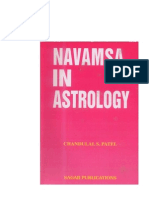| Muhurta cintamani (Original Sanskrit Text) | | Parashara hora shastra (Original Sanskrit Text) | | Shatpanchashika (Original Sanskrit Text) | | Surya siddhanta (Original Sanskrit Text) | Astakavarga Mahanibandh
Atharvana Jyotisam
Bharateeya Jyotisha
Bharateeya Kundalee Vijnan
Bhavamanjari
Bhuvanadeepaka
Bhrugu Samhita
Brihaddaivajnaranjanam
Bruhad Hodachakra Vivaranamu
Bruhajjatakam
Bruhatsamudrika Sastramu
Chamatkara Chintamani
Graha-Vichaar Maalaa Pushp
Jaataka Bhushanam
Jaataka Parijatam
Jatakaadesha Marg
Jyothisha Samgraha
Jyotisatattva Prakasa
Jyotisha Dwara Roga Upachar
Jyotisha Kalpadruma
Jyotisha Prasna Phala Ganana
Jyotisha Ratnakara
Jyotisha Samhita
Jyotisha Shabdhakosha
Laghu Jaatakamu
Laghu Parasharee - Madhya Parasharee
Laghuparashari Bhashya
Lilavati
Maanasajari
Muhoorta Deepika
Muhurtha Chintamani
Phaladeepika
Prashna Chandeshwar
Prashnamka Choodamani
Prasnamarga
Sachitra Jyotisha Siksha - 1
Sachitra Jyotisha Siksha - 2
Sachitra Jyotisha Siksha - 4
Sachitra Jyotisha Siksha - 6
Sachitra Jyotisha Siksha - 8
Shambuhora Prakasha
Surya Siddhanth
Taajika Neelakanti
Vasanta Rajasakunam
Vivaha Vrundavanam
Vruddhayavanajaataka & Minaraja - Vol.II
Vruddhayavanajaataka of Minaraja - Vol.I
Vrutth and Vrutthi Prabhandh
Yogini Jatakam
| Jyotisa (Sanskrit jyotisa (Devanagari ज्योतिष), from jyótis- 'light, heavenly body': also anglicized Jyotish and Jyotisha) is the Hindu system of astrology (also known as Indian astrology, Hindu astrology, and of late, Vedic astrology). Traditionally, it has three branches: actually the word jyotish which belongs to the Vedangas. There are six Vedangas: Shiksha (phonetics), Kalpa (rituals), Vyakarana (grammar), Jyotishya (astronomy), Nirukta (etymology) and Chhandas (metrics). These are mentioned in the Upanishads. Nirukta has explained as dhyotiti yat tat jyotihi jyotisham i.e. which enlightens us that type of a flame a Jyoti that is Jyotish.
The latter two are part of predictive astrology (Phalita). Conceptually, therefore, Indian astrology has two branches, Ganita (Siddhanta) and Phalita (Samhita plus Hora).
The foundation of Jyotisha is the notion of bandhu of the Vedas or scriptures, which is the connection between the microcosm and the macrocosm. The practice of Jyotisha primarily relies on the sidereal zodiac, which is different from the tropical zodiac used in Western astrology in that an ayanamsa adjustment is made for the gradual precession of the vernal equinox. Jyotisha includes several nuanced sub-systems of interpretation and prediction with elements not found in Hellenistic astrology, such as its system of lunar mansions (nakshatras).
Astrology remains an important facet in the lives of many Hindus. In Hindu culture, newborns are traditionally named based on their jyotish charts, and jyotish concepts are pervasive in the organization of the calendar and holidays as well as in many areas of life, such as in making decisions made about marriage, opening a new business, and moving into a new home. To some extent, astrology even retains a position among the sciences of modern India. Following a controversial judgement of the Andhra Pradesh High Court in 2001, some Indian universities even offer advanced degrees in astrology.
The term jyotiṣa in the sense of one of the Vedanga, the six auxiliary disciplines of Vedic religion, is used in the Mundaka Upanishad and thus likely dates to Mauryan times. The Vedanga Jyotisha redacted by Lagadha dates to the Mauryan period, with rules for tracking the motions of the Sun and the Moon.
The documented history of Jyotishas {see http://www.astrowebindia.com/visit/OLD1.html} begins with the interaction of Indian and Hellenistic cultures in the Indo-Greek period. The oldest surviving treatises, such as the Yavanajataka or the Brihat-Samhita, date to the early centuries CE. The oldest astrological treatise in Sanskrit is the Yavanajataka ('Sayings of the Greeks'), a versification by Sphujidhvaja in 269/270 CE of a now lost translation of a Greek treatise by Yavanesvara during the 2nd century CE under the patronage of the Western Satrap Saka king Rudradaman I.
The first named authors writing treatises on astronomy are from the 5th century CE, the date when the classical period of Indian astronomy can be said to begin. Besides the theories of Aryabhata in the Aryabhatiya and the lost Arya-siddhānta, there is the Pancha-Siddhāntika of Varahamihira.
The main texts upon which classical Indian astrology is based are early medieval compilations, notably the Bṛhat Parāśara Horāśāstra, and Sārāvalī by Kalyāṇavarman. The Horashastra is a composite work of 71 chapters, of which the first part (chapters 1-51) dates to the 7th to early 8th centuries and the second part (chapters 52-71) to the later 8th century. The Sārāvalī likewise dates to around 800 CE. English translations of these texts were published by N.N. Krishna Rau and V.B. Choudhari in 1963 and 1961, respectively.
Historically, the study of astrology in India was an important factor in the development of astronomy in the Early Middle Ages. |
|
